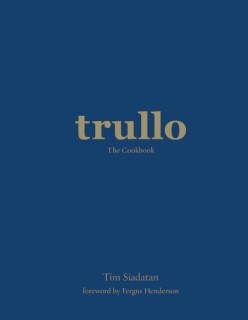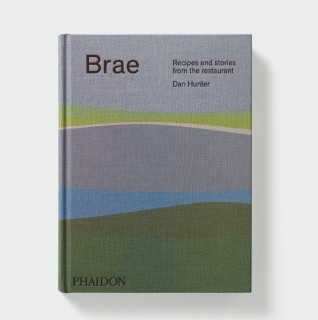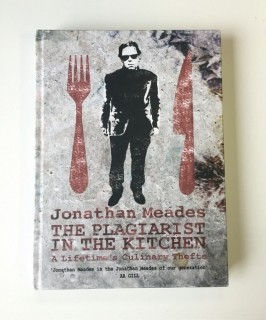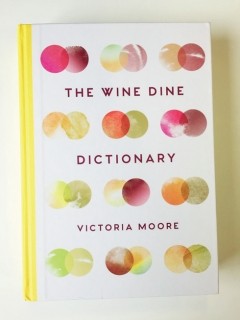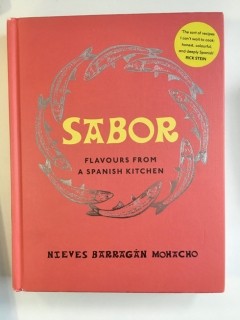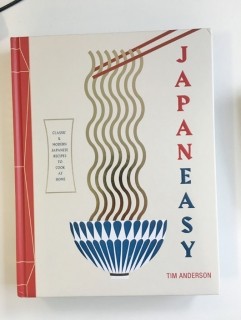We read it for you

Trullo - The Cookbook
Tim Siadatan
Tim Siadatan is currently smashing it at Padella, his and business partner Jordan Frieda’s casual pasta restaurant in Borough Market, but it was at Trullo where he started to turn heads. Having worked at Fifteen, St John, Moro and The River Café, Siadatan’s cooking lexicon is varied and impressive – the foreword to the book is by Fergus Henderson – and this is evident in almost every page. From his note on olive oil (‘it needs to be respected’) to his thoughts on conscious eating (‘pork from British farms and a Union Jack on the package will nearly always mean miserable pigs from somewhere in the UK’), Siadatan’s mentors have evidently left a lasting impression.
Like much the of the cooking at Trullo, the book is uncomplicated – you can go a number of pages before coming across a picture of a dish . Many are simple to prepare, but that doesn’t mean they are prosaic, with the likes of lamb, offal, orzo and purple olive and toasted pine nut meatballs; and rolled pork loin stuffed with nduja and prunes with chickpea, red pepper, spinach and rosemary appearing alongside simpler meat and pasta dishes.
Trullo even addresses the seemingly simple process of combining sauce with pasta, with Siadatan expanding on the process of ‘spadellare’ – meaning sauce panning – whereby the pasta is vigorously tossed in the pan of sauce for at least 30 seconds to work the gluten and to create a viscous sauce. Simple, if you know how.
Usefulness: ****
Self indulgence: *
Must try recipe: Whole salt beef shin with bone marrow and black pepper bread sauce
Publisher and price: Square Peg, £25
Brae - Recipes and stories from the restaurant
Dan Hunter
If you haven’t already heard of Dan Hunter then you soon will, with his Australian restaurant debuting at number 44 on the World’s 50 best Restaurants list earlier this year.
Hunter’s out-of-the-way restaurant in Birregurra, Australia, a country town 90 minutes from Melbourne, where sheep outnumber people, has been described as Mugaritz Down Under, thanks to the chef’s time there. He started as a stagiaire but left as chef de cuisine, complete with a Mugaritz-like philosophy to cooking, using produce from the surrounding countryside. Yet, Brae has a strong identity of its own, as Hunter’s book shows.
While the recipes are plentiful, it is the very end of the book that will likely be of most interest to the cheffing community and speaks volumes about Hunter as a chef and restaurateur. The final chapter, on Kitchen dos and don’ts is an almost Joycean stream of consciousness in which Hunter breathlessly details how a chef working for him should act. It’s not short, with advice ranging from “don’t work like a maniac and chop stuff all onto the floor” and "don’t ask me to taste something and offer it to me on a dirty spoon” to “do not leave containers in the wash up still labelled” (an action punishable with 10 push-ups). Anyone considering joining Brae’s brigade in the future will do well to read this carefully.
Usefulness: **
Self indulgence: ****
Must try recipe: Egg yolk, potato and Jerusalem artichoke, sauce of comté and vin juane
Publisher and price: Phaidon, £39.95
The Plagiarist in the Kitchen
Jonathan Meades
An antidote to the traditional cookbook, former food critic Jonathan Meades’ latest work is preoccupied with the idea of culinary theft. As he says: “Anyone who claims to have ‘invented’ a dish is dishonest or delusional or foaming”.
The recipes are generally classic with many borrowed from famous food writers and the restaurants and chefs Meades reviewed during his 15-year stint at The Times, including Piere Koffmann, Nico Ladenis and Simon Hopkinson.
Brevity is a central theme, the method for coriander sauce is simply one word: process. Other recipes include pike with beurre blanc, game timbale and a curious lamb recipe that sees the leg marinaded in wine then marinaded again by way of a ‘capacious’ syringe loaded with brandy and orange juice.
While the recipes won’t be of much interest to professionals, his commentary on cooking, restaurants, chefs and a great deal of other seemingly unconnected subjects will be. Meades is a hugely entertaining writer and the book is peppered with anecdotes and contrarian statements: “So far as I can recall I have not eaten guacamole,” is just one example.
Most entertaining of all are the nuggets of advice that are repeated across the bottom of every page, including “get treatment for squeamishness”, “fuck the guests” and – our favourite – “vegetarianism is curable”.
Usefulness: *
Self indulgence: *
Must try recipe: Bagna cauda (cooked for Jane Grigson in a Piedmontese vineyard)
Publisher and price: Unbound, £20
The Wine Dine Dictionary
Victoria Moore
Journalist and wine expert Victoria Moore has arranged her latest book like a foreign language dictionary. The Wine Dine Dictionary is a book of two halves, the first allows the reader to look up food and find out what wine to pair with it, while the second is the reverse, arranged mainly by grape but, where appropriate, by origin.
It’s a refreshing approach and one that makes the book accessible to those that are in a bit of a rush. The Wine Dine Dictionary is written concisely, requiring little previous knowledge of the subject, but there are enough nuggets of insight and opinion to keep those that are knowledgeable interested.
Moore is no stranger to Michelin-dining rooms, but the book isn’t highfalutin, there is even an entry for fishfinger sandwiches with tomato ketchup (a fitou, côtes du rhône, Californian zinfandel or Aussie syrah-cabernet sauvignon blend, if you were wondering). She’s also good at giving alternatives when it comes to dishes that are usually paired with expensive, hard-to-find wines: highly relevant for this month, there is a discussion on red burgundy’s affinity with grouse, but Moore also suggests less obvious and more affordable reds from Languedoc and also from New World producers.
Specialists should not be put off by The Wine Dine Dictionary's accessibility. This intelligently written book is an essential read for anyone with a professional interest in matching food with wine.
Usefulness: *****
Self indulgence: *
Must try pairing: Carbonara with dry red lambrusco
Publisher and price: Granta, £20
Sabor - Flavours from a Spanish kitchen
Nieves Barragan Mohacho
It’s fairly typical for a cookbook to take the name of its writer’s restaurant – thus enabling the home cook to have a crack at some of the dishes they have tried while eating out – but it is more unusual that a book is released that is named after a restaurant that is yet to open.
This is exactly what former Barrafina chef Nieves Barragan Mohacho has done, however, with Sabor (Spanish for flavour), which is also the name of the restaurant she will open with business partner Josè Etura, in October. As a piece of marketing for her restaurant, therefore, this beautifully put together book is unparalleled.
The recipes in the book won’t necessarily be of the dishes that will be served in Mohacho’s first solo venture, but they do give an idea of how her cooking is likely to be post Barrafina. The book is split into sections such as starters and fried bites, salads, vegetables, fish and shellfish, meat and desserts, and Mohacho also gives more than 20 pages to egg dishes that go beyond the Spanish tortilla into territory such as Iberian scotch eggs, consommé with poached duck eggs and Jerusalem artichoke purée with fried egg and truffle.
Mohacho is one of the industry’s most likeable chefs and Sabor only helps to enhance that reputation with the homespun stories of family eating that punctuate the recipes. It’s a tantalising hint at what lies ahead for fans of her food.
Usefulness: ***
Self indulgence: ***
Must try dish: Cauliflower with salted almonds, shallot and chilli
Publisher and price: Penguin Fig Tree £25
Japaneasy
Tim Anderson
As the title suggests, Tim Anderson’s new book puts paid to the notion that Japanese food can be tricky to cook (“Gyoza? Very easy. Karaage? Soooooo easy! Tempura? Stupidly easy.” is how it begins) and that its recipes have remained unchanged for centuries.
From small dishes, sushi and noodles to larger plates (whole grilled fish with tsuyu and grated radish), Anderson demonstrates the relative simplicity of creating Japanese dishes in a light-hearted and approachable style that makes this book stand out. Take his description of Japanese potato salad (who knew?), which he puts on the same pedestal as other aspects Japan excels in, namely trains, lunch boxes, karaoke machines and “beauty found in the sadness of impermanence and imperfection.” Then there’s his neat observation of miso soup, which he compares to the bacon sandwich: “Even when it’s bad, it’s still pretty good”.
This whimsical and at times very amusing approach is in stark contrast to how Japanese cuisine is traditionally represented in books, and Anderson doesn’t stop there. Japaneasy also lifts the lid beautifully on the some of the more modern dishes – many interpretations of western recipes – that are popular in Japan. So there’s a recipe for Japanese steak hache – Anderson notes a restaurant chain in the country called Bikkuri Donkey that specialises in said dish – and one for Japanese carbonara; there is a whole world of Japanese-style pasta dishes, collective known as wafu, he notes.
Quirky, fun and enlightening, Japaneasy is a delicious read.
Usefulness: ****
Self indulgence: ***
Must try dish: Japanese steak hache
Publisher and price: Hardie Grant £20
